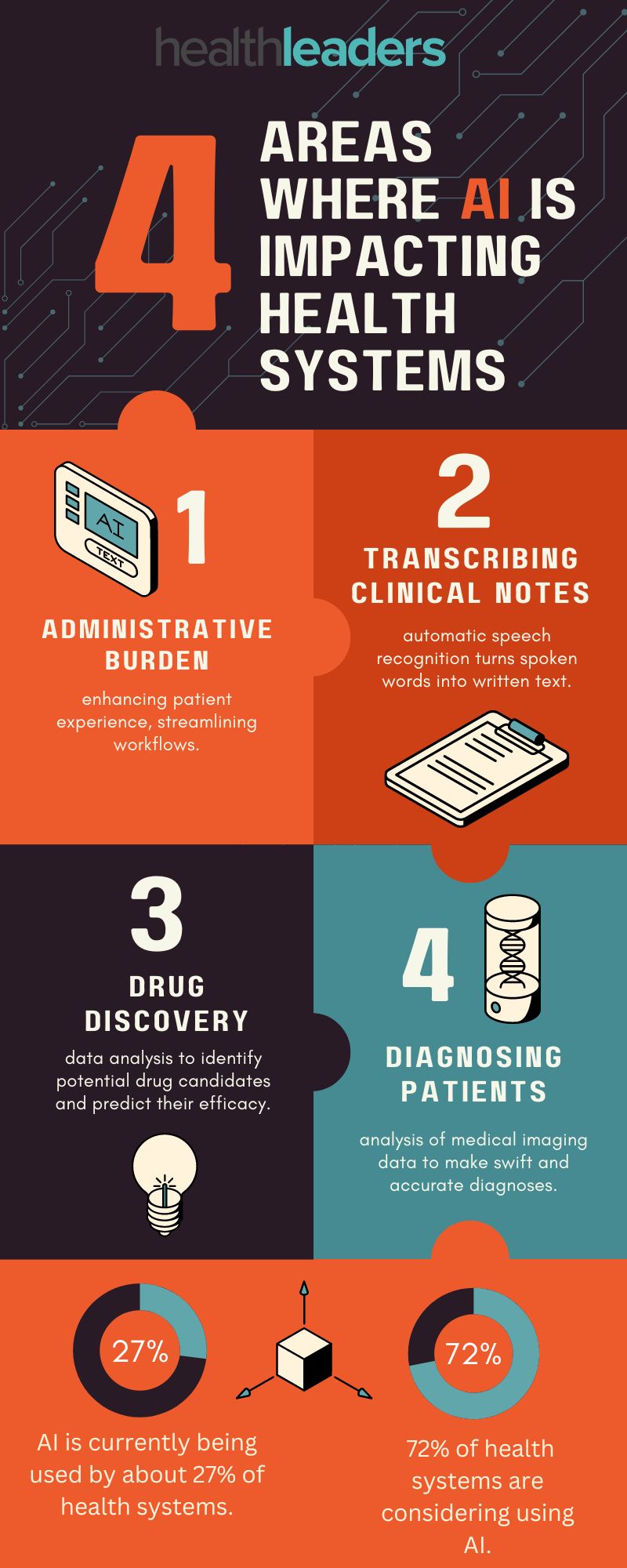From diagnosis to administration, AI is already helping.
AI has already come far from its infancy as we see more implementation and how it is helping health systems in a variety of ways.
Four areas where AI is making the most impact on health systems right now are:
Diagnosing patients. AI has given providers another means of analyzing medical imaging data, from X-rays to MRIs to CT scans, AI has proven to be helpful here by making swift and accurate diagnoses. Although many consumers have expressed uneasiness about having AI make their diagnosis, about six in ten patients, providers have assured that a human analysis will still always have the final say.
AI is already helping in diagnosing ear infections as well as identifying jaundice in newborns.
Transcribing clinical notes. The day has finally come when physicians and nurses no longer have to be typists in addition to their health roles. AI has made big advances in transcribing medical notes via automatic speech recognition (ASR) which employs advanced algorithms and machine meaning models to convert spoken words into written text. This is helping health systems produce fast, accurate documentation and give more of their time back to their patients.
Pittsburgh-based UPMC is exploring how AI can help in patient care by transcribing accurate clinical notes and integrating them with the patient’s EHR.
Drug Discovery. AI can analyze vast datasets faster than a human ever could. By doing this AI can accelerate the drug discovery process to identify potential drug candidates and predict their efficacy. This AI area is far more technical than simply transcribing notes and may take longer for health systems to implement.
Atomwise is a biotech company that aims to reduce the costs of drug development with the help of supercomputers to make predictions from a database to show which drugs will work and which won’t. In 2015 the company launched a virtual search for safe, existing medicines that could be used or redesigned to treat the Ebola virus.
Administrative burden. One of the most straightforward ways health systems are using AI is by lowering administrative burden. AI is multifaceted in this area, from enchanting patient experience to streamlining workflows, AI is slowly taking the administrative weight off of health systems shoulders.
One health system making strides here is Omaha, Neb.-based CHI Health which is employing artificial intelligence to predict missed appointments.
About twenty-seven percent of health systems are already using AI in some way, and about seventy-two percent and considering implementing AI.
The possibilities for healthcare transformation seem endless with AI. Also, see our coverage on how AI is being used to identify healthcare-based outbreaks. There’s no doubt that AI is helping health systems and has the potential to do even more.
Check out this infographic for a quick breakdown.

Marie DeFreitas is an associate content specialist at HealthLeaders.
